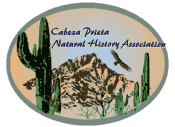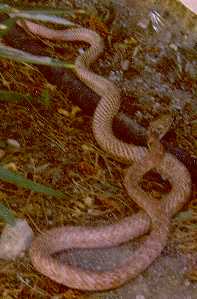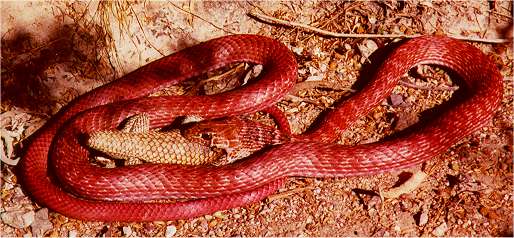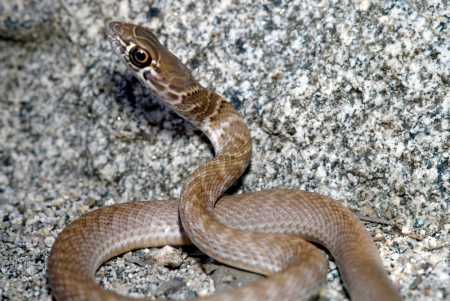
Cabeza Prieta Natural History Association
Sonoran Desert Reptiles
Masticophis flagellum (Whipsnake, Coachwhip, Red Racer)



Identification: 36 - 102 in. (91-260 cm). The wedged lower preocular, smooth scales in 17 rows at middle (13 or fewer just before vent), and lack of well-defined lengthwise stripes are diagnostic. Coloration highly variable. Among the following subspecies, the Red Racer, Sonoran, and Baja California Coachwhips have a dark phase. Reddish or pinkish above, often grading to tan toward the tail. Wide black, dark brown or pink crossbands on neck, sometimes more or less united, may be faint or absent. Dark phase (called the Wester Black Coachwhip); Black above. Pale below, or more or less blackened, becoming salmon pink to red toward tail. Found in south central Arizona; outnumbers red phase around Tucson. Young with dark crossbands about 3 scales wide. General tone above is tan, gray, cream, pink, or red, usually with black crossbars on neck. Occasional individuals are black. Slender body and tail, and scalation suggesting a braided whip, have earned common name. Usually 2 or 3 anterior temporals. Anal divided. Young: Blotched or crossbanded with dark brown or black on a light brown background. Black neck markings may be present or faint or absent. Eats small mammals (sometimes including bats), birds and their eggs, lizards, snakes (including rattlers), frogs, young turtles, insects and carrion.
References
|
Photo Credits:
Photo #1
Photo #2
Photo #3
Copyright Creative Commons
HTML & Programing by
Thomas R. Powell